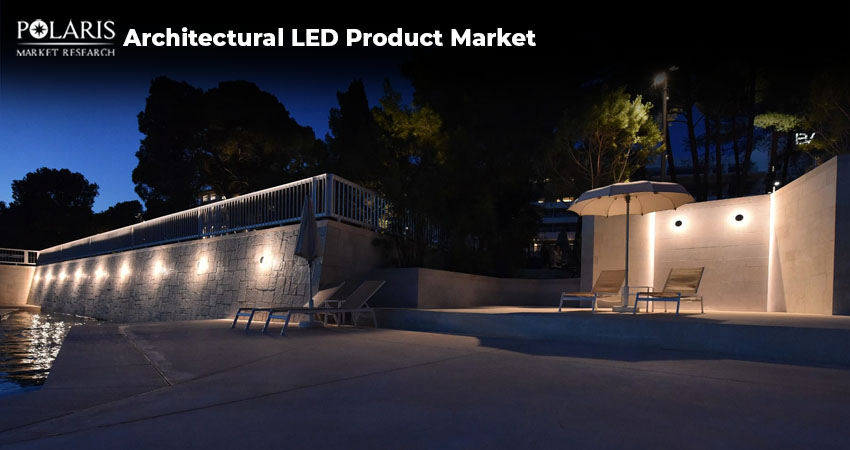Illuminating Design: Exploring the Role of LED Lighting Products in Modern Architecture

In the realm where technology meets design, architectural LED lighting has emerged as a defining element of modern construction. More than just a source of illumination, LED lighting systems are now integral tools in shaping environments, enhancing aesthetics, and contributing to sustainability goals. From the soaring facades of urban skyscrapers to serene landscape installations, architectural LED products have redefined the possibilities of lighting design.
As cities grow smarter and architecture becomes more immersive, LED lighting continues to play a pivotal role in bringing structures to life. This blog delves into the realm of architectural LED products, highlighting key types, functionalities, and design benefits. It also sheds light on emerging trends that are shaping this dynamic sector. Let’s dive in!
Rise of Architectural LED Lighting
LED lighting has undergone significant evolution since they were first introduced. Originally introduced as simple indicator lights, LEDs have grown into powerful, efficient, and versatile lighting solutions. With advances in color rendering, thermal management, and output efficiency, LEDs have become the leading choice for architectural projects worldwide.
Over the years, LEDs have transitioned from being merely functional to becoming an expressive medium in architecture. LED lighting products offer precise control and higher energy efficiency. In addition, they can be seamlessly integrated into diverse materials and structures. Today, LEDs are a crucial aspect of interior and exterior design, used to improve ambiance, highlight structural features, and even communicate information.
Key Types of Architectural LED Products
The versatility of LEDs allows manufacturers to offer a wide range of products tailored to different architectural needs. Here are some of the most prominent categories:
- Facade Lighting: Facade lighting systems are designed to illuminate building exteriors, enhancing their architectural character and creating visual landmarks. They often incorporate dynamic color-changing capabilities and weather-resistant enclosures.
- Pixel LED Systems: Pixel LED systems consist of individually addressable nodes that can be controlled independently. They are used to display complex patterns, animations, and video content, creating an immersive and interactive lighting experience.
- Flexible Lighting: These strips can be bent and shaped to fit various contours. This makes them ideal for accent lighting, cove lighting, and backlighting. They are available in single color or RGB variants and provide smooth and even illumination with easy installation.
- Linear LED Fixtures: These versatile products are used to create continuous lines of light, highlighting architectural features and defining spaces. They can be recessed, surface-mounted, or suspended, offering flexibility in design.
- In-Ground Lighting: Used to illuminate pathways, gardens, and architectural details from below, in-ground lighting adds depth and dimension to outdoor spaces.
- Spotlights and Wall Washers: Spotlights provide focused beams for highlighting key elements, whereas wall washers distribute even light across surfaces. Applications of spotlights and wall washers include accent lighting for artwork or signage, feature illumination in atriums or lobbies, and highlighting textural materials like stone or bricks.
Advantages of Architectural LED Products
Architectural LED products offer a wide range of advantages that make them a preferred choice for modern design and construction. Some of them include:
Energy Efficiency and Cost Savings
Architectural LED products are known for their exceptional energy efficiency. Unlike conventional lighting systems, LEDs consume significantly less electricity to produce the same level of brightness. This leads to lower energy consumption and reduced energy bills, making them an economically smart choice for large-scale architectural projects. Additionally, LEDs last significantly longer than conventional bulbs, resulting in fewer replacements and lower maintenance expenses over time.
Design Flexibility and Aesthetic Appeal
One of the standout benefits of architectural LED products is their unmatched design versatility. With their compact size and adaptable formats, LEDs can be seamlessly integrated into a wide variety of architectural settings. In addition, LEDs offer a wide range of colors and dimming capabilities, enabling architects to create specific moods and atmospheres.
Sustainability and Environmental Benefits
LED lighting products contribute meaningfully to sustainability goals. By using less energy, they help reduce greenhouse gas emissions and the strain on power grids. Beyond energy savings, LEDs do not contain harmful substances like mercury, making them a safer and more environmentally friendly choice than traditional lighting technologies. For organizations and developers aiming to meet green building certifications or adhere to eco-conscious construction practices, architectural LED lighting serves as a critical component in achieving those objectives.
Trends Driving the Architectural LED Products Landscape
Here are some of the key trends shaping the architectural LED products landscape:
Smart Lighting Systems: Smart lighting systems are being increasingly incorporated across commercial and residential places globally. These systems enable remote control, automation, and dynamic adjustments using mobile apps or centralized building management systems. The use of these systems enhances both user experience and energy savings.
Rise of Human-Centric Lighting (HCL): HCL is transforming architectural design by focusing on how lighting impacts human health, mood, and productivity. LEDs can be fine-tuned in terms of intensity and color temperature to mimic natural daylight cycles. This helps regulate circadian rhythms and improve overall well-being, making them especially relevant in spaces such as offices, schools, and healthcare environments where lighting influences focus, alertness, and even sleep patterns.
Emphasis on Sustainability and Green Building: With the rising global emphasis on climate action and environmental responsibility, architectural LED products have become a cornerstone in sustainable design. LEDs naturally consume less power and have a longer lifespan, reducing both carbon emissions and material waste. In addition, many manufacturers are now focusing on recyclable materials and eco-friendly production methods.
The Road Ahead
Architectural LED lighting is transforming our built environment, creating spaces that are not only functional but also visually stunning and emotionally engaging. With superior energy efficiency, longevity, and aesthetic appeal, LEDs are now the go-to choice for modern architectural lighting solutions. As technology continues to evolve, we can expect to see even more innovative and transformative applications of LED lighting in architecture.

